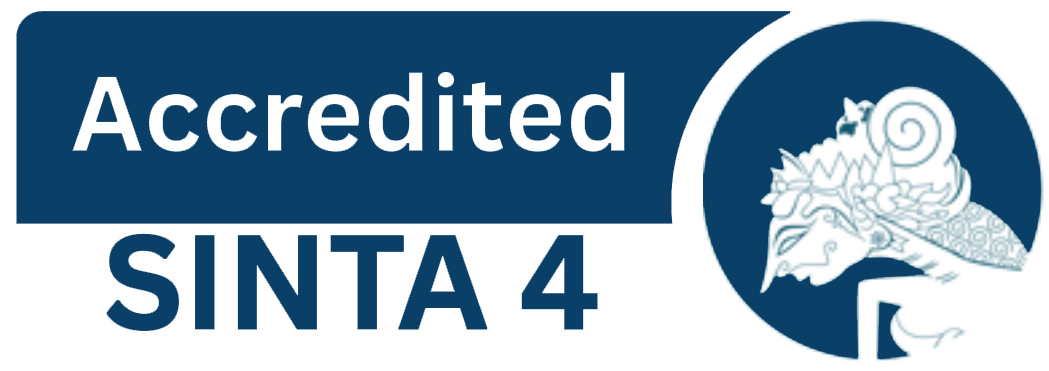PENGEMBANGAN MATERI AJAR PRODUKSI LISAN BERBASIS MICROLEARNING BAGI GURU BAHASA DI KABUPATEN AGAM, SUMATERA BARAT, INDONESIA
DOI:
https://doi.org/10.22460/p2m.v9i2.3424Keywords:
English speaking learning materials, teachers, Microlearning,Abstract
The microlearning method has been accelerating and facilitating the pedagogical approach to developing teachers as professionals in 21st-century learning. However, research into English speaking learning materials, particularly microlearning-based English speaking learning materials for the teachers in Agam District, West Sumatra, is limited and urged. This study reports the development of Common European Framework (CEFR) and microlearning-based spoken production learning materials for teachers of junior high schools in Agam through the workshop. The findings revealed that the teachers’ competence was significantly positive in developing learning materials based on microlearning. They become skillful and able to design microlearning-based English-spoken materials for their context and their needs. Their expertise can have an impact on the teachers in Agam and act as a socializing agent for the other teachers in West SumatraReferences
Allela, M. (2021). Introduction to Microlearning. Commonwealth of Learning. www.col.org
Aristovnik, A., KeržiÄ, D., RavÅ¡elj, D., TomaževiÄ, N., & Umek, L. (2020). Aristovnik. Sustainability (Switzerland), 12(20), 1–34.
Avillanova, A. A., & Kuswandono, P. (2019). English teacher professional development in Indonesia: the challenges and opportunities. English Review: Journal of English Education, 8(1), 41. https://doi.org/10.25134/erjee.v8i1.1972
Buchem, I., & Hamelmann, H. (2010). Microlearning : a strategy for ongoing professional development Microcontent and Microlearning. ELearning Papers, 21(September 2010), 1–15. openeducationeuropa.eu/en/download/file/fid/19530
Buhu, A., & Buhu, L. (2019). The applications of microlearning in higher education in textiles. ELearning and Software for Education Conference, April 2019, 373–376. https://doi.org/10.12753/2066-026X-19-189
Darling-Hammond, L. (2017). Effective Teacher Professional Development. June, 1–2.
De Gagne, Jennie C., Woodward, A., Park, H. K., Sun, H., & Yamane, S. S. (2019). Microlearning in health professions education: A scoping review protocol. In JBI Database of Systematic Reviews and Implementation Reports (Vol. 17, Issue 6, pp. 1018–1025). Lippincott Williams and Wilkins. https://doi.org/10.11124/JBISRIR-2017-003884
de Gagne, Jennie Chang, Park, H. K., Hall, K., Woodward, A., Yamane, S., & Kim, S. S. (2019). Microlearning in health professions education: Scoping review. JMIR Medical Education, 5(2), 1–10. https://doi.org/10.2196/13997
Gabrielli, S., Kimani, S., & Catarci, T. (2005). The Design of MicroLearning Experiences: A Research Agenda (On Microlearning). Microlearning: Emerging Concepts, Practices and Technologies after e-Learning. Proceedings of Microlearning 2005. Learning & Working in New Media, 45–54.
Jomah, O., Masoud, A. K., Kishore, X. P., & Aurelia, S. (n.d.). Micro Learning: A Modernized Education System. www.digitalpromise.org/microcredentials
Leong, K., Sung, A., Au, D., & Blanchard, C. (2021). A review of the trend of microlearning. Journal of Work-Applied Management, 13(1), 88–102. https://doi.org/10.1108/jwam-10-2020-0044
Mayes, F. banks and A. S. (2012). Early Professional Development for Teachers.
Meng, J., & Wang, Z. (2016). Micro-learning in College English Teaching. Msie, 338–341. https://doi.org/10.2991/msie-16.2016.113
Mohammed, G. S., Wakil, K., & Nawroly, S. Si. (2018). The effectiveness of microlearning to improve students’ learning ability. International Journal of Educational Research Review, 3(3), 32–38. https://doi.org/10.24331/ijere.415824
Said, I., & Çavuş, M. S. (2018). ALU Design by VHDL Using FPGA Technology and Micro Learning in Engineering Education. British Journal of Computer, Networking and Information Technology, January, 1–18. https://doi.org/10.52589/bjcnit/m4uwnh4j
Sankaranarayanan, R. (2022). INFLUENCE OF MICROLEARNING APPROACH ON. June.
Shail, M. S. (2019). Using micro-learning on mobile applications to increase knowledge retention and work performance: A review of literature. Cureus, 11(8). https://doi.org/10.7759/cureus.5307
Sirwan Mohammed, G., Wakil, K., & Sirwan Nawroly, S. (2018). The Effectiveness of Microlearning to Improve Students’ Learning Ability. International Journal of Educational Research Review, 3(3), 32–38. https://doi.org/10.24331/ijere.415824
Tanang, H., & Abu, B. (2014). Teacher professionalism and professional development practices in South Sulawesi, Indonesia. Journal of Curriculum and Teaching, 3(2). https://doi.org/10.5430/jct.v3n2p25
Tolstikh, O., Pankova, V., & Krasnova, E. (2021). Microlearning in teaching English to students of engineering specialities. E3S Web of Conferences, 273. https://doi.org/10.1051/e3sconf/202127312136
Whitworth, B. A., & Chiu, J. L. (2015). Professional development and teacher change: The missing leadership link. Journal of Science Teacher Education, 26(2), 121–137. https://doi.org/10.1007/s10972-014-9411-2
Zhang, Q. L., & Zhang, K. (2017). Application of micro learning resources in college physical education. Journal of Tianjin University OfTechnology and Education, 4(16), 63–65.


















